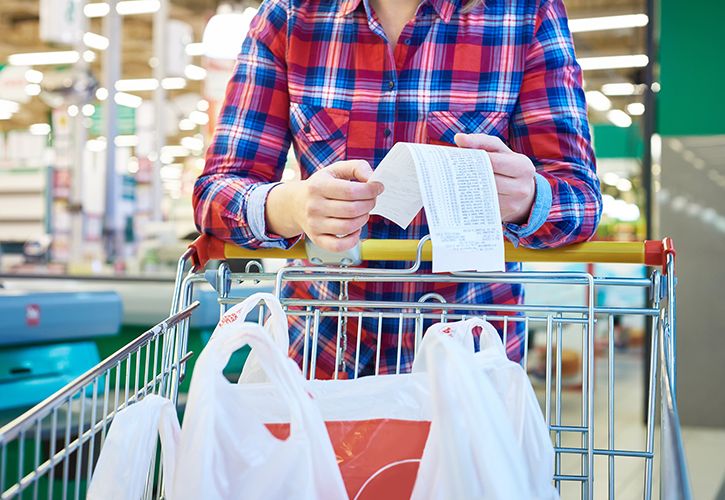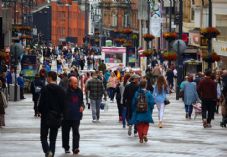UK DIY News
Retail Sales Slow As Cost Of Living Rises

The pandemic has meant much of retail bounced between being open and closed, significantly impacting sales and changing consumer behaviours. In April 2020, non-essential retail stores were closed, pushing many consumers to buy goods online. In this context, while all comparisons are provided on a year-on-year (YoY) basis, those focused on online/in-store have also been compared with March 2019 (Yo3Y). This will be clearly signposted below.
Sales figures are not adjusted for inflation. Given that both the April SPI (BRC) and March CPI (ONS) show inflation running at historically high levels, the small drop in sales masked a much larger drop in volumes once inflation is accounted for.
Covering the four weeks 3 - 30 April 2022
- On a Total basis, sales decreased by 0.3% in April, against an increase of 51.1% in April 2021. This is below the 3-month average growth of 3.2% and the 12-month average growth of 6.4%.
- On a three-year basis, Total retail sales grew 3.9% (Yo3Y) during April compared with the same month in 2019.
- On a three-year basis, Total retail sales grew 3.9% (Yo3Y) during April compared with the same month in 2019.
- UK retail sales decreased 1.7% on a Like-for-like basis from April 2021, when they had increased 39.6%. This was below the 3-month average growth of 0.1% and the 12-month average growth of 3.3%.
- Over the three months to April, Food sales decreased 1.8% on a Like-for-like basis and 1.3% on a Total basis. This is below the 12-month Total average growth of 0.7%. For the month of April, Food was in growth year-on-year.
- Over the three-months to April, Non-Food retail sales increased by 1.8% on a like-for-like basis and 6.9% on a Total basis. This is below the 12-month Total average growth of 11.1%. For the month of April, Non-Food was in decline year-on-year.
- Over the three months to April, In-Store sales of Non-Food items grew 59.3% on a Total basis and 45.8% on a Like-for-like basis. This was an improvement on the Total 12-month average growth of 50.2%.
- On a three-year comparison, over the three months to March, In-Store sales of Non-Food items declined 48.2% (Yo3Y) on a Total basis since March 2019.
- On a three-year comparison, over the three months to March, In-Store sales of Non-Food items declined 48.2% (Yo3Y) on a Total basis since March 2019.
- Online Non-Food sales decreased by 13.9% during April, compared with growth of 11.3% in April 2021. This is better than the 3-month decline of 24.1%.
- On a three-year comparison, Online Non-Food sales increased by 51.4% (Yo3Y) in April. This is above the 3-mth average increase of 41.6%.
- On a three-year comparison, Online Non-Food sales increased by 51.4% (Yo3Y) in April. This is above the 3-mth average increase of 41.6%.
- Non-Food Online penetration rate decreased to 38.6% in April from 45.1% in April 2021. However, it was up 15.2 percentage points on the 29.9% seen at the same point in 2019.
Helen Dickinson OBE, Chief Executive | British Retail Consortium
“The rising cost of living has crushed consumer confidence and put the brakes on consumer spending. Sales growth has been slowing since January, though the real extent of this decline has been masked by rising inflation. Big ticket items have been hit hardest, as consumers reigned in spending on furniture, electricals and other homeware; compounded by delays on goods coming from China. Meanwhile, thanks to the April sunshine, garden goods and fashion saw stronger sales, particularly occasionwear as consumers prepared for summer and this year’s wedding season.
“Customers face a difficult year; with the Bank of England predicting inflation to reach more than 10%. Retailers are experiencing higher costs as a result of rising commodity prices, transport costs, labour shortages, delays at ports, and the war in Ukraine. Further headwinds are incoming, such as rising global food prices, which rose 13% between March and April. Retailers will continue to do all they can to mitigate the effects of these costs rises, but unfortunately they cannot absorb them all.”
Paul Martin, UK Head of Retail at KPMG | KPMG
“The cost of living crisis came home to roost for retailers in April, with sales growth going into decline for the first time in 15 months.
“Sales of clothes and footwear continued to see growth on the high street and online, but conscientious consumers curbed unnecessary spending with technology and items for the home bearing the brunt of spending cutbacks. Food and drink bounced back with 3% growth in April – largely due to Easter falling later this year.
“With interest rates and inflation rising and the Bank of England warning of a possible recession, the squeeze on disposable household income is starting to have an impact on the high street. Against a backdrop of falling consumer confidence, the retail sector has a bumpy time ahead as they face spiraling cost pressures from all directions. Many retailers will have no choice but to raise prices to protect margins, but the longer we see high inflation and real household incomes falling, the more likely it is that consumers will change their spending behaviour, prompting a decline in the health of the retail sector and possibly more casualties on the high street.”
Food & Drink sector performance | Susan Barratt, CEO | IGD
“Supported by holiday spending for Easter, at first glance food and drink sales performed well in April. However, with mis-matched dates for Easter, plus our emergence from the 2021 lockdown when grocery sales were unusually elevated, it’s difficult to draw firm conclusions. However, there’s no doubt the sector is operating against a backdrop of rising inflation, which reached a 30-year-high in April and is creating an unprecedented set of challenges.
“As such, the mood of shoppers is bleak and IGD’s Shopper Confidence Index remains very low. With around 70% experiencing rising food, energy and petrol bills, shoppers are becoming divided in how they cope with the cost-of-living crisis and one in seven of the least affluent households claim to be missing more meals. IGD predicts that inflation is likely to peak higher and last longer than official forecasts. Therefore, shoppers will face severe financial pressures for at least the rest of the year, especially as they contend with the full effect of the rise in the energy price cap.”
Source : BRC
Image : sergeyryzhov / iStockphoto.com (517010420)
Insight DIY is the only source of market information that I need and they always have the latest news before anyone else.











































